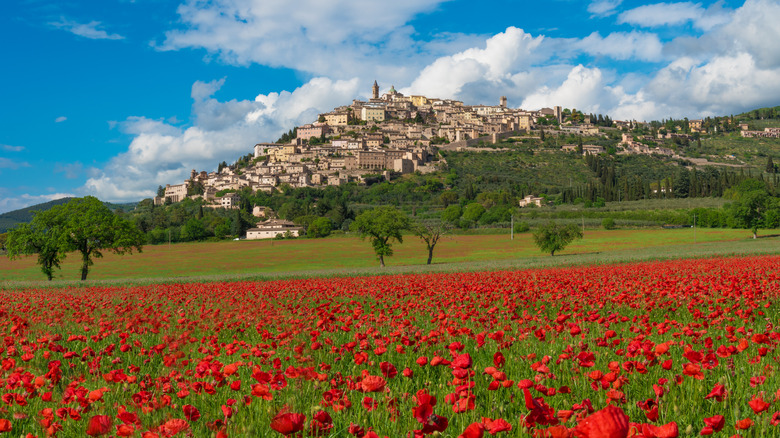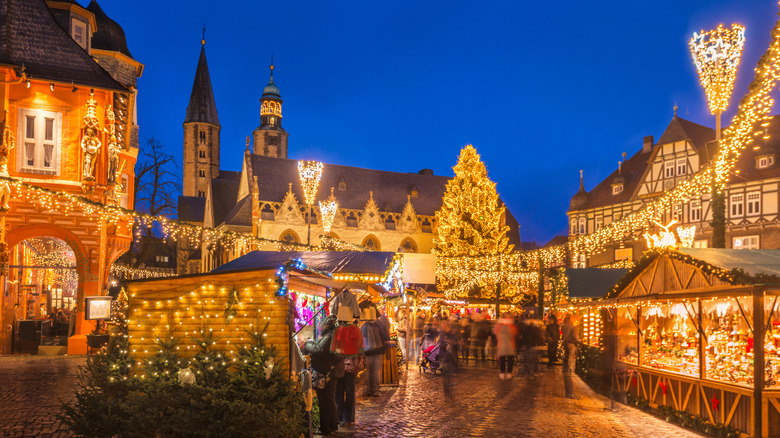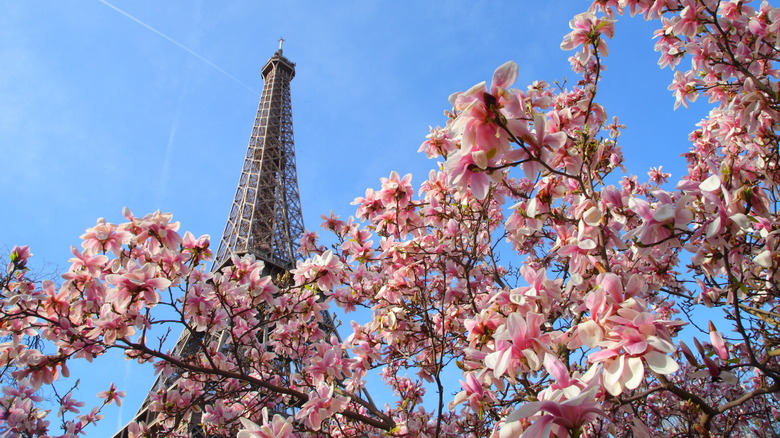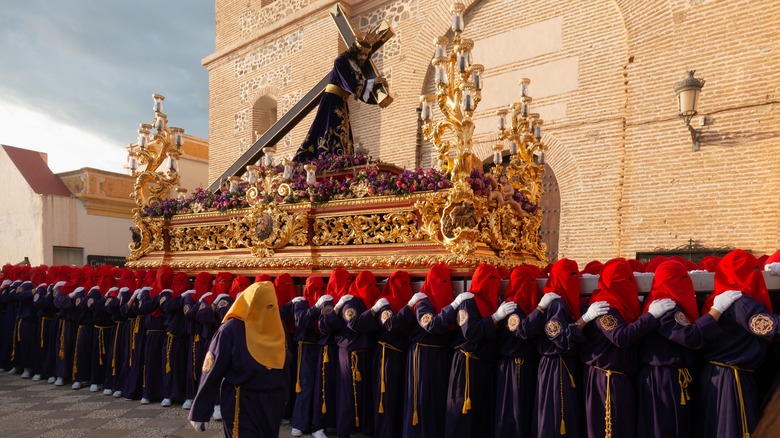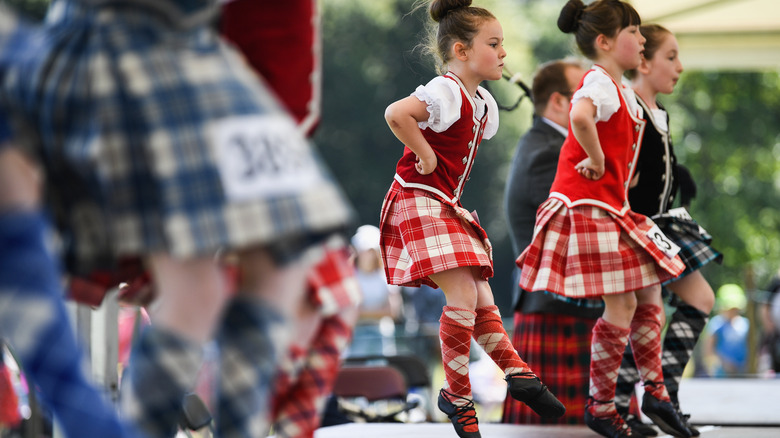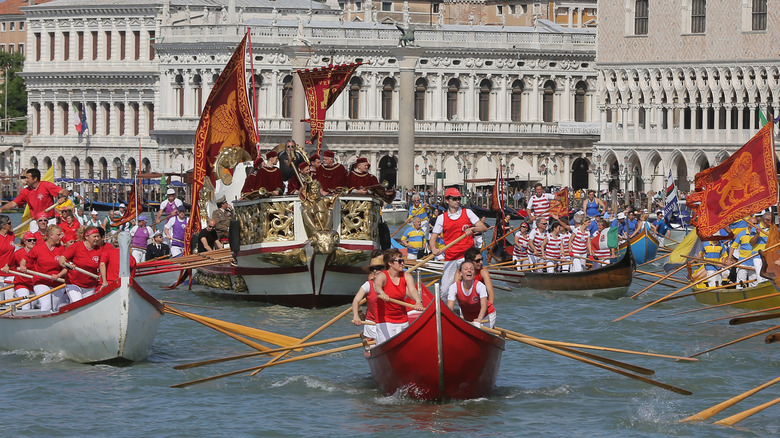Visit These Must-See European Countries At The Perfect Time With Rick Steves' Expert Tips
A lot of planning goes into the perfect trip to Europe. You've selected stops for your itinerary for years, but one big question remains: when will you go? Fortunately, European travel expert Rick Steves has advice for the best time of year to visit each country so that you can save up and time your vacation days to ensure you have the trip of a lifetime. Forget spring, summer, winter and fall. On his website, Rick Steves' Europe, Steves explains that when it comes to travel, the year has three seasons — peak season, shoulder season, and off-season — and each comes with its advantages and disadvantages.
While it varies by country, in Europe, peak season generally falls between May and September, a.k.a. the hottest months of the year. You'll have to brave crowds and wait in line for the most popular spots during this time. Many Americans go on vacation in this window, and if you have kids on summer break from school, it might be your only option. Europe's off-season encompasses the coldest months of the year: November-March. Because so many fewer visitors arrive in the winter, you might enjoy popular tourist hotspots without the tourists — but the weather can be bad, and many businesses and attractions close. Shoulder season refers to the transition between peak and off-peak, usually April and October, which can offer the best of both worlds.
Germany
Germany is undoubtedly beautiful in the summer, but you'll spend your vacation battling peak-season crowds. If you plan to attend Oktoberfest, you must go in the fall, but that might not be such a bad thing. Outside of the big festival in Munich, where you will have to fight hordes of tourists, considering around 6 million people show up for it yearly, autumn is shoulder season in Germany. This could be the perfect time to take a tip from Rick Steves and choose a hidden gem over a major tourist attraction. Select one of the less popular but still fantastic beer festivals around Germany in the fall, like Freimarkt in Bremen.
If you're daring enough to brave a chilly German winter, you'll be rewarded with a truly memorable vacation. Christmas markets (pictured) pop up nationwide in December, especially in major cities like Berlin and Freiburg. Christmas Garden, an outdoor light show, appears in Dresden, Hamburg, and many other cities. In Cologne, winter is also the time for an incredible street carnival with dates in November, February, and March. You may also want to stop by some picturesque villages. As Rick Steves stated on his blog, "Dustings of snow turn German towns and landscapes into a wonderland."
France
You'll want to follow Rick Steves' tip for getting the most out of European museum visits in France, but what does he say about the best time to travel there? According to his website, despite the many fun summer festivals, the best times to head to France are late spring and fall. In summer, travelers flock to major attractions. However, in the winter off-season, attractions in the biggest cities generally shorten their hours or close altogether. Traveling in the shoulder seasons means you'll encounter fewer tourists while still having access to notable landmarks and experiences.
If you head to France in the fall, you'll encounter many wine festivals, like the Fête de la Pressée in Dijon. In the spring, you'll enjoy the beaches without the people and relatively uncrowded city streets without miserable winter weather. Steves also recommends that travelers go to Burgundy to see fields of yellow colza flowers or the south of France for wild poppies. In Paris, travelers can enjoy cherry blossom trees in bloom in April.
Spain
Summering in Spain might sound like a dream, but it's also extremely hot. Its winters can also be too cold to enjoy many outdoor activities. According to Rick Steves, if you want to enjoy the weather, visit in the spring or the fall. With some of the most exciting cultural events of the year, spring may be your best time to book a trip to Spain. Since it's technically part of the country's shoulder season, the lines to get into Madrid's Prado Museum won't be as long, and your tour of the cathedral in Toledo won't be too busy.
We've learned a lot of excellent travel tips from Rick Steves. Still, the most important one may be to embrace the culture of the places you visit to get the most out of your trip — and there's no better way to do that than to join local people at their most significant events and festivals. If you time your trip right, you can visit during Semana Santa, the week before Easter. It might seem like a solemn centerpiece for your itinerary, but you will see rituals that have happened in Spain for around 400 years. If you're there at the beginning of May, however, you can enjoy a more cheerful festival: Cordoba's Battle of the Flowers, during which people parade intricate flower sculptures around the city.
Great Britain
According to Rick Steves' Europe, Great Britain has a shorter peak season than some European countries — typically just July and August. If you want to travel to Europe around this time, prices won't go up too much, but the shoulder season around peak season is longer in Great Britain and, in many cases, just as lovely. Whether you plan to visit England, Scotland, or Wales, the end of May, June, September, and the beginning of October are great choices.
Rick Steves' top travel tip for putting together successful vacations is planning ahead, and that may be especially important when going to Great Britain in shoulder season. Spring and fall can be an exhilarating time to take a trip there, but you'll want to plan things out in advance and ensure you're in the right places to enjoy the best events. Steves recommends the Chelsea Flower Show in England and the Highland Games in Scotland, which extend into the fall. One fun option is the September Braemar Gathering in Cairngorms National Park, allowing visitors to hear bagpipe bands and enjoy traditional competitions like caber tossing and hammer throwing.
Italy
Rick Steves spends a lot of his year in Italy. However, for those individuals who only have a week or two to go abroad, he recommends that, despite the added crowds and expenses, travelers visit in Italy's peak season: May, June, September, and October. While many other European countries peak during the hottest summer months, July and August can be brutal in Italy. In off-season cooler months, you might get into some major tourist attractions faster, but things don't stay open as late, and many beaches close entirely.
"Here, lifelong travel memories are like low-hanging fruit: They're yours to harvest," Steves said of Italy on his website. There is no shortage of exciting things to do during Italy's peak season. Steves recommends Venice's traditional boat festival, Festa della Sensa (pictured), in May. In June, you can catch the beginning of Verona's opera season and the incredible flower festival Le Infiorate in Spello. Lots of fresh fruits and vegetables are in season in the fall, so if you come to Italy in September or October, you might want to dedicate your time to trying local cuisine. Just follow Rick Steves' advice on having authentic dining experiences while traveling so that you can get the most out of your efforts.
